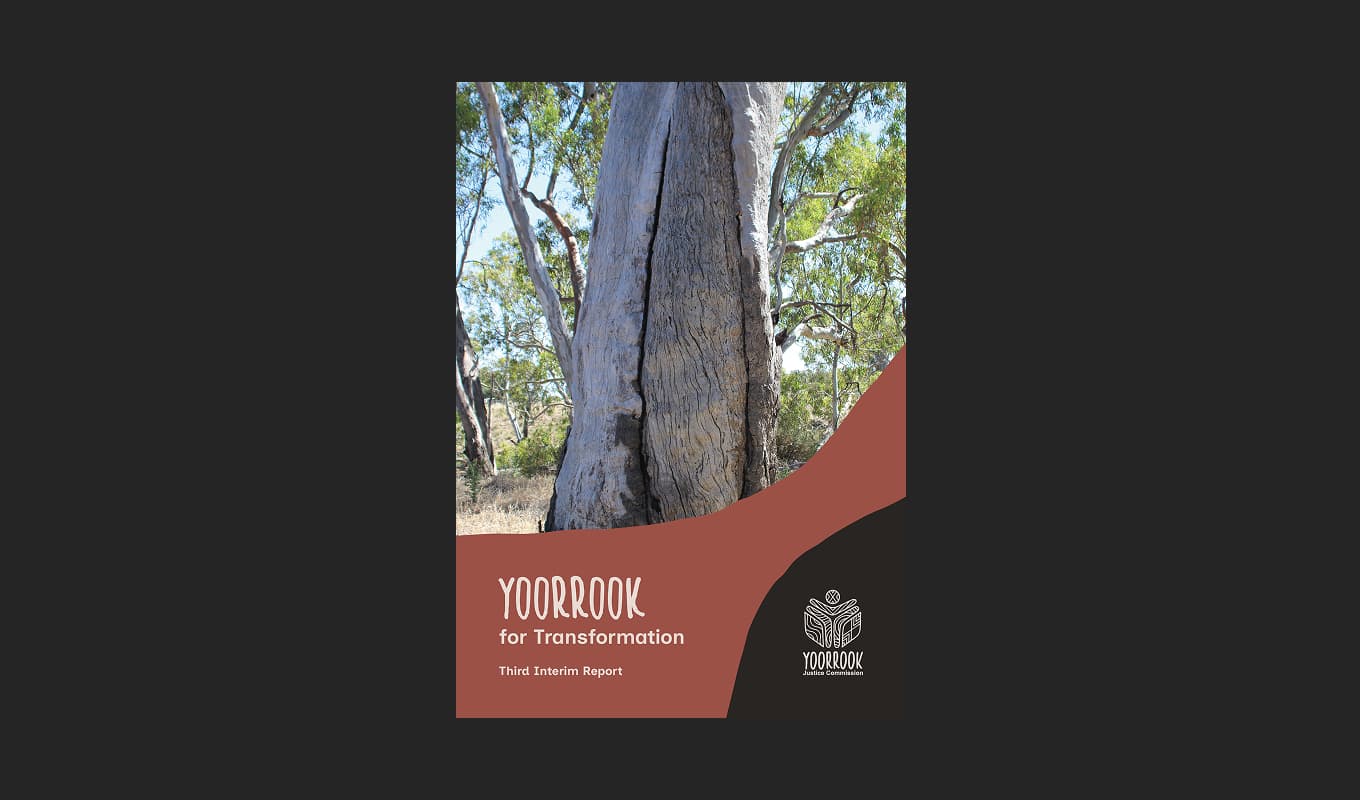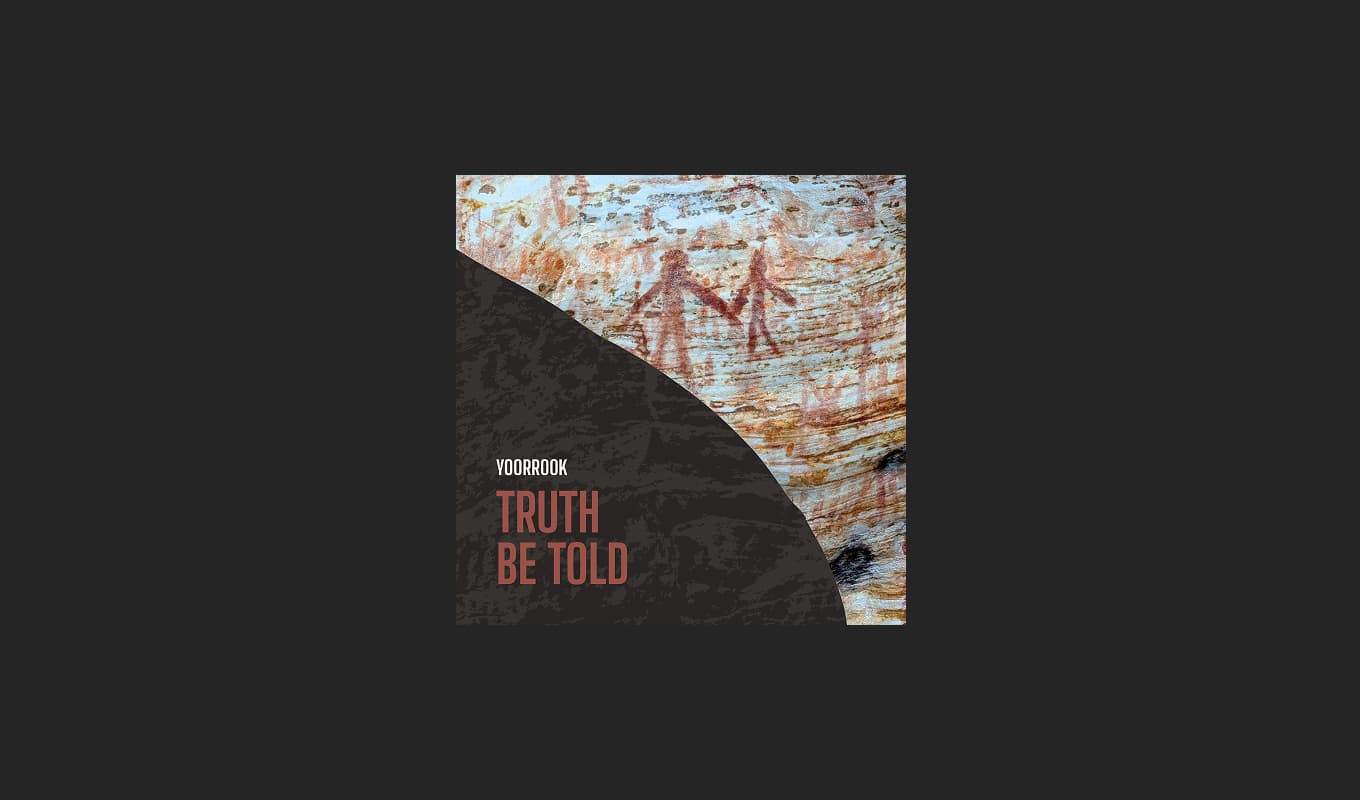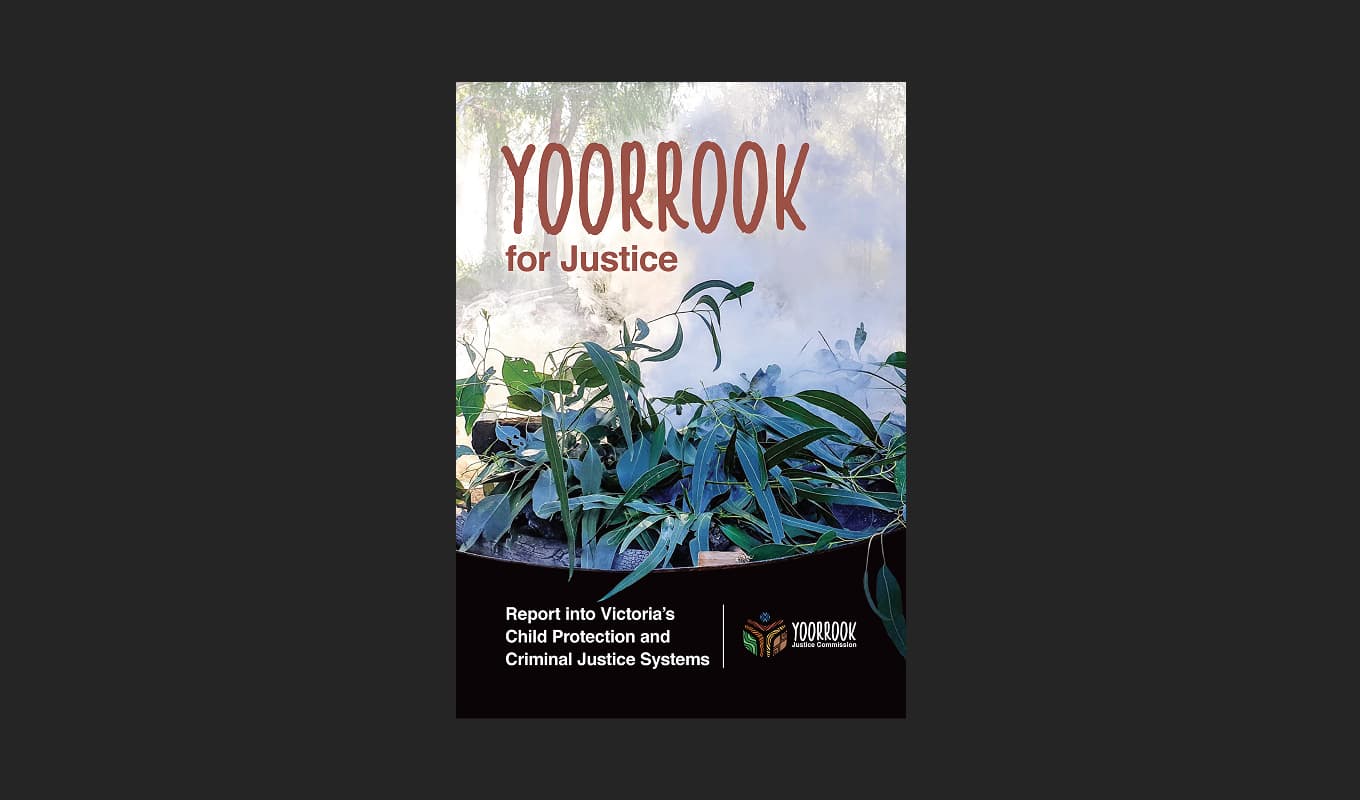Key findings
This page summarises ten key findings about the history of colonisation in Victoria made by Yoorrook, based on consistent themes identified in the evidence presented to the Commission across all areas of its inquiry.
These key findings serve as important markers for setting the record straight and empowering all Victorians to move forwards with a shared understanding of our history.
The Yoorrook Justice Commission was established in 2021. Yoorrook’s mandate was broad and far-reaching, including reporting on the historical and ongoing systemic injustice experienced by First Peoples in Victoria in all areas of life since colonisation. Following four years of inquiry; over 1,350 submissions; evidence from more than 250 witnesses across sixty-five hearing days, as well as sixty-seven roundtables and yarning circles, the Commission has completed its work.
Yoorrook has delivered three interim reports that examine and identify the causes and consequences of systemic injustice in detail: Yoorrook with Purpose (2022), Yoorrook for Justice (2023) and Yoorrook for Transformation (2025).
Across this extensive body of work, Yoorrook has consistently found that the injustices faced by First Peoples in Victoria today flow directly from colonisation. Following invasion, successive colonial and Victorian governments have enacted laws, adopted policies and engaged in practices that dispossessed and removed First Peoples from their lands and waters and denied equitable access to social services and resources.
All major political parties, whether in government or in opposition, have perpetuated and compounded the trauma, injustice and suffering of First Peoples. All have a responsibility to work towards agreed outcomes to ensure the existing trauma, injustice and suffering is not further exacerbated or prolonged.
Yoorrook’s findings are not the result of evidence from First Peoples alone. Over the course of its inquiry, Yoorrook received evidence from First Peoples including Elders, Traditional Owners and Community-Controlled Organisations. But the Commission also received evidence from the Premier, ministers, public servants, historians, healthcare workers, educators, other service providers, religious leaders, descendants and everyday Victorians. The consistent and overwhelming theme of this evidence is that the legacy of colonisation is still manifest in every aspect of life—including the current-day overrepresentation of First Peoples in the criminal justice and child protection systems, and in the inequitable outcomes in health and wellbeing, housing, employment, education, economic and political life. First Peoples have demonstrated that with secure access to their lands, waters and resources, they are better able to provide for the social, economic and cultural needs of their community than government or industry.
Yoorrook’s key findings draw from the conclusions presented in the Commission’s existing reports, but are limited in number in order to highlight the key events in Victoria’s colonial history that underpin the systemic injustice facing First Peoples in Victoria today.
Commissioners Walter, Hunter and North did not approve of the inclusion of the key findings in the final report. Commissioners recommend the reader view the findings in their totality in Yoorrook for Justice (2023) and Yoorrook for Transformation (2025).
Yoorrook's work is just the beginning. There is much more to be done.
The land now known as Victoria was not ‘discovered’ by the British Crown or ‘Founded’ by settlers
First Peoples have been caring for Country in Victoria for at least tens of thousands of years. Pre-colonisation, Victoria was home to about 60,000 First Peoples, comprising 300 to 500 clan groups, and speaking over forty First Peoples languages.
The sovereignty of First Peoples in Victoria has never been ceded and continues to exist
First Peoples exercised sovereignty before the British invaded. For time immemorial, Victorian First Peoples have practised their lore and law, cared for their communities, families and children, and nurtured Country through their spiritual, cultural, material and economic connections to land, water and resources. It is the first law of this country. First Peoples’ sovereignty reflects ongoing spiritual and ancestral ties between the land, waters and Traditional Owners. First Peoples’ sovereignty has not been lawfully acquired under international law. This is because the purported settlement or occupation of Australia by the British cannot be validly relied upon as Country was already occupied (it was not terra nullius; that is, ‘land belonging to no one’).
The initial occupation of the land now known as Victoria by European settlers from 1834 onwards was illegal, rapid and largely uncontrolled.
After the initial settlement of Gunditjmara Country in 1834, colonisers rushed to seize highly valuable grazing land and waters across the state, even when it was contrary to the laws of the colonial government. The discovery of gold in 1851 triggered another rapid increase in the population, with devastating consequences for First Peoples and their lands and waters.
The taking of country and resources was violent as First Peoples were displaced and massacred by European settlers in the pursuit of their land and waters
By the end of the 1860s, there had been at least fifty recorded massacres across Victoria, in which just eight colonists were killed compared to 978 First Peoples. It is highly likely that this violence was significantly under[1]recorded. Correspondence between colonial authorities in Victoria and the British Imperial Government reported on the scale of the violence, and the significant threat to First Peoples’ populations. The British Imperial Government were aware of the gross abuses of First Peoples and failed to act or take any effective action to protect the First People, their property or other rights. The colonial government of the day played both an active and passive role in violence, including massacres, killings, rape and pillaging. In the twenty years that followed the arrival of Europeans in Victoria, the number of Victorian First Peoples is estimated to have dramatically reduced by more than ninety per cent from 15,000 to just 1,907.
Laws and Policies of the British and colonial governments were used to authorise the confiscation, theft, use and damage of lands and waters belonging to First Peoples without their consent
Large pastoral estates established between 1836 and 1851 created the foundations for the accumulation of vast amounts of land and intergenerational wealth unavailable to First Peoples. By 1884, all First Peoples’ lands and waters had been divided and categorised, and First Peoples had been forcibly expelled from their lands and confined to smaller and smaller parcels of land through the reserve system over time.
The protection acts and other related colonial laws and policies deliberately disrupted First Peoples’ connections with their traditional lands and water and each other and by today’s standards, a number of these actions would amount to genocidal acts
From the 1850s, First Peoples were forced onto missions and reserves, where they were monitored, punished, prohibited from speaking language and practising culture, and were often Christianised. Control over First Peoples’ lives intensified with the introduction of the Aborigines Protection Act 1869 (Vic) and its amendment and successor Acts, including the Aborigines Protection Act 1886 (Vic). The 1886 Act was used to keep ‘Aboriginal natives’ on reserves and force people of ‘mixed descent’ off reserves so they could be absorbed into the general community and eventually disappear. The Act marked the beginnings of the Stolen Generations, and was used to justify the removal of First Peoples children and the separation of families. The power of police to forcibly remove children under child welfare laws continued until 1985 through the Aborigines Act 1910 (Vic) and Aborigines Act 1957 (Vic) and subsequent legislation. These acts caused significant and irreversible harm to First Peoples of Victoria.
Victorian First Peoples have demonstrated remarkable resilience in maintaining their identity, connection to country and one another
This includes:
- fiercely defending their lands, cultures and autonomy
- political advocacy and fighting for fair and just treatment
- fighting for land rights and land justice across Victoria and all of Australia
- establishing Aboriginal community-controlled organisations that have exhibited First Nations excellence in areas such as health, education, legal services, language protection and renewal and political advocacy
- through long and hard fights for recognition under the Aboriginal Lands Act 1970 (Vic), Aboriginal Land (Lake Condah and Framlingham Forest) Act 1987 (Vic), Native Title Act 1993 (Cth), Aboriginal Heritage Act 2006 (Vic) and the Traditional Owner Settlement Act 2010 (Vic).
None of the wealth generated from the land and waters of First Peoples in the period since colonisation in Victoria has been directly shared with Traditional Owners
First Peoples in Victoria have not received any of the wealth generated from gold, timber harvesting, grazing and government land licences, or from water-related revenue. First Peoples have been largely excluded from the traditional resource sectors in Victoria and their benefits, and denied a meaningful opportunity to grow wealth from their traditional lands and waters.
Colonisation is not only a historic event but a process that continues to affect First Peoples in Victoria Today
There is an unbroken line between past atrocities, government actions and the experiences for First Peoples today.
Colonisation has caused, and continues to cause, profound loss and trauma to First Peoples in Victoria. The impacts of colonisation have also contributed to ongoing systemic discrimination in Victoria’s child protection, criminal justice, health, housing, education and political systems. First Peoples have experienced, and continue to experience, political, social and economic injustices, and human rights violations, as a direct result of colonisation.
First Peoples in Victoria have a fundamental right to self-determination and a right to redress for the harms caused by colonisation.
Treaty is the best pathway to self-determination and must include redress for the harms suffered as a result of colonisation. Redress under the United Declaration on the Rights of Indigenous Peoples (UNDRIP) is multidimensional and can include elements of restitution, compensation, rehabilitation, satisfaction and guarantee of non-repetition.
The Victorian Government has acknowledged the importance of self-determination within First Peoples policy and programs since 2015. Treaty is an expression of self-determination and a method for the transfer of decision-making power, authority, control and resources to First Peoples to decide First Peoples’ issues. The Treaty process represents a historic opportunity for structural reform and redress, through which First Peoples can be empowered to determine and manage the systems, laws, policies and programs that affect their communities, families and children.
Reports and Recommendations
Read the official reports and recommendations of the Yoorrook Justice Commission.

Yoorrook for Transformation
Third Interim Report: A five-volume comprehensive reform report presenting evidence and findings on systemic injustices, and specific recommendations for meaningful change to transform the future.

Truth Be Told
An official public record that documents First Peoples experiences since colonisation, preserves crucial testimonies for future generations and creates an enduring resource for education and understanding.

Recommendations for change
Yoorrook Justice Commission’s recommendations for truth-telling, justice, and systemic reform in Victoria.
